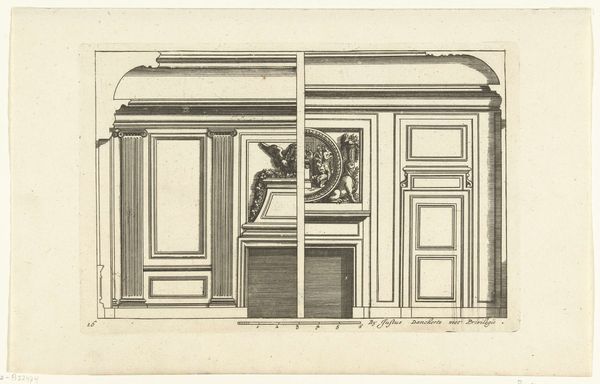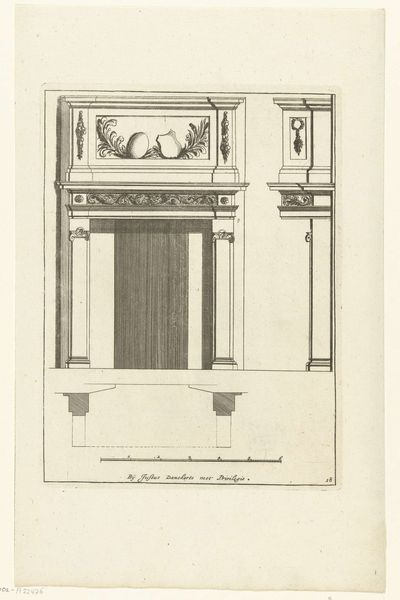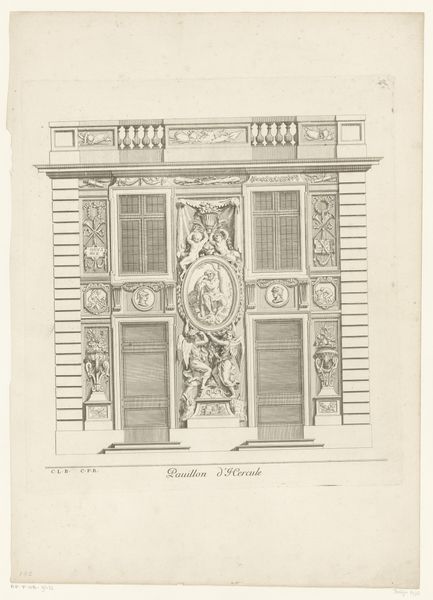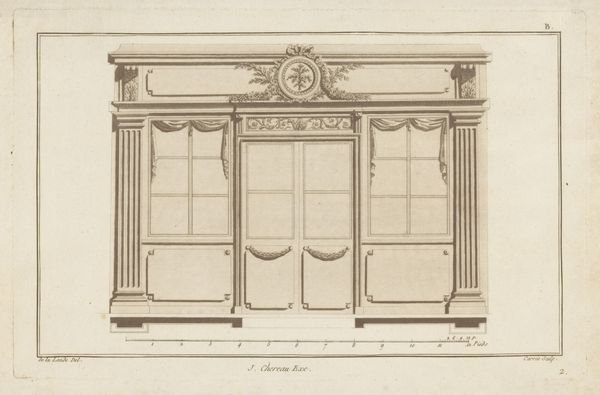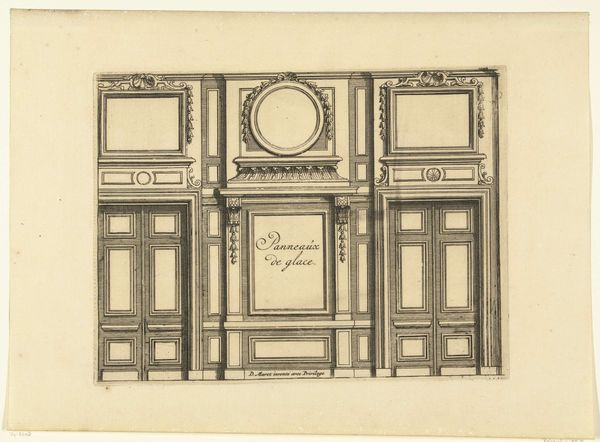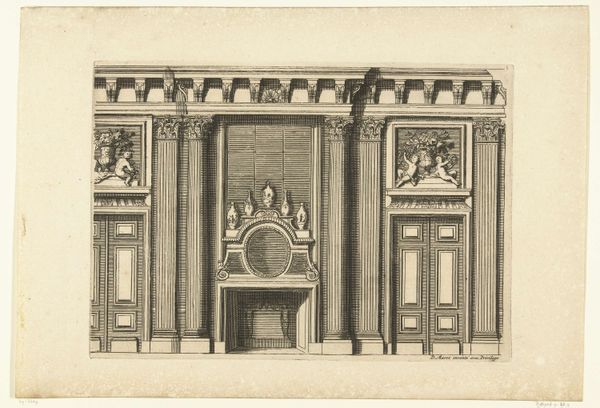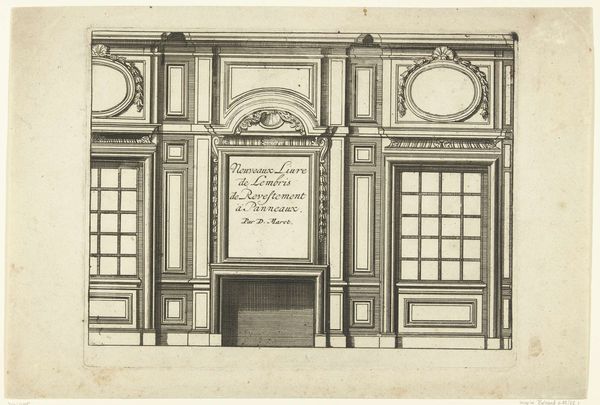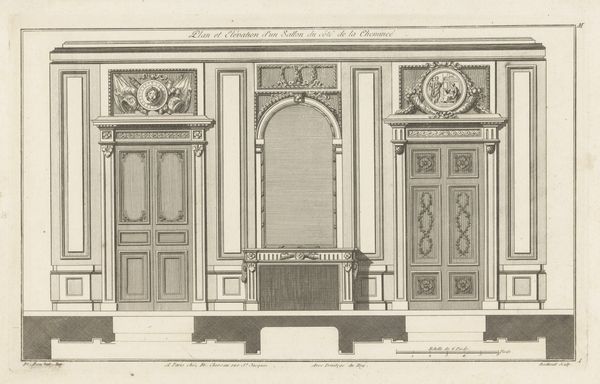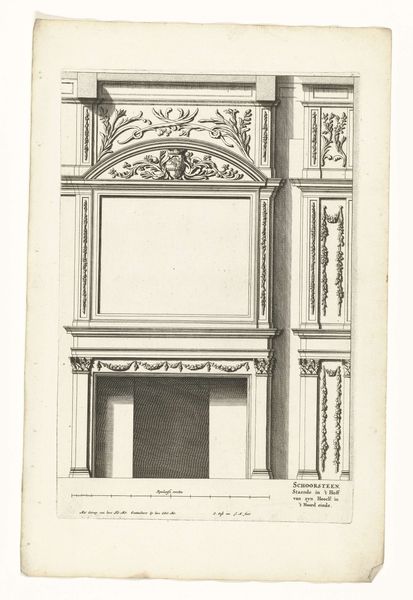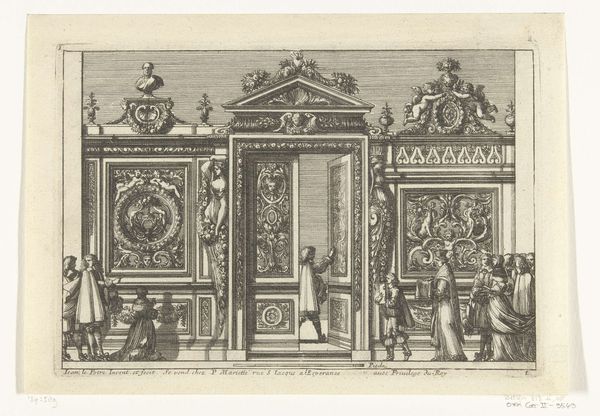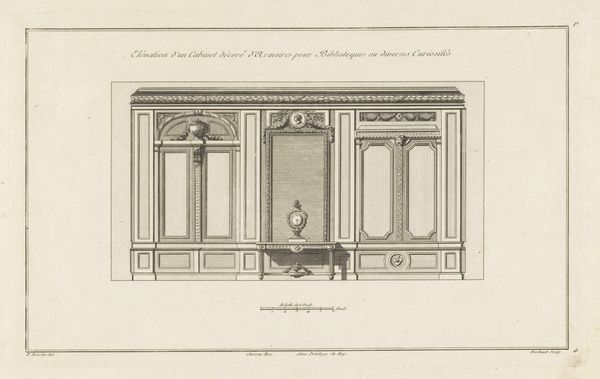
drawing, print, engraving, architecture
#
drawing
#
baroque
# print
#
old engraving style
#
line
#
decorative-art
#
engraving
#
architecture
Dimensions: height 170 mm, width 242 mm
Copyright: Rijks Museum: Open Domain
Curator: Welcome, I’d like to draw your attention to this engraving, titled “Muur met muurdam tussen raamkozijnen,” or "Wall with Pier Between Window Frames," made between 1703 and 1712, by Daniël Marot. It's currently housed here at the Rijksmuseum. Editor: It has such a pristine, almost technical drawing quality. The crosshatching makes the whole thing feel very precise and orderly. Curator: Absolutely. Marot was a key figure in introducing French Baroque design to the Netherlands and England. Looking closely, we can appreciate the labor involved in creating this ornate design. The sharp lines achieved with engraving are astounding. It served as a model book. Editor: Model book... so a visual guide to be replicated. How interesting that architecture becomes a sort of printed commodity, dictating taste and social aspirations of the patrons. It brings up questions about the role of craftsmanship and labor in shaping status, as well. Curator: Exactly! And this image wouldn’t have only informed the artisans. Printmaking democratized access to these styles; broader consumption changed architectural practices across social classes. Editor: The centralized panel flanked by those large windows implies status through implied scale, right? What sort of patron are we envisioning having a wall like this? Curator: We see the emergence of this type of design in elite residences during this period—wealthy merchants eager to express status. Think in terms of global trade, increased manufacturing and colonial interests as part of the cultural context that would necessitate such imagery and opulent materials. Editor: The symmetry is remarkable! It emphasizes order and control—commodities traded through such means that you mentioned—as a message. But still, I'm wondering if the graphic quality we’re looking at also shaped new aesthetics outside of the wealthy homes it would have constructed. Did designs such as this alter ideas about depth, symmetry, ornamentation among printmakers outside Marot's immediate circle? Curator: Definitely, you are gesturing toward a feedback loop; design shapes taste and printed interpretations broadened the visual vocabulary for artists working in other modes and locations. The print became more than an advertisement for this actual wall... it impacted artistic expression itself. Editor: So in essence, we’re looking at a blueprint that, by way of the printmaking process, became an instrument of larger cultural and economic changes in this period. Curator: Precisely! And on that note, thank you for taking this deep dive with me into the print, where the ornamental touches of the Dutch Golden Age really reveal insights into both cultural movements and artistic vision.
Comments
No comments
Be the first to comment and join the conversation on the ultimate creative platform.

